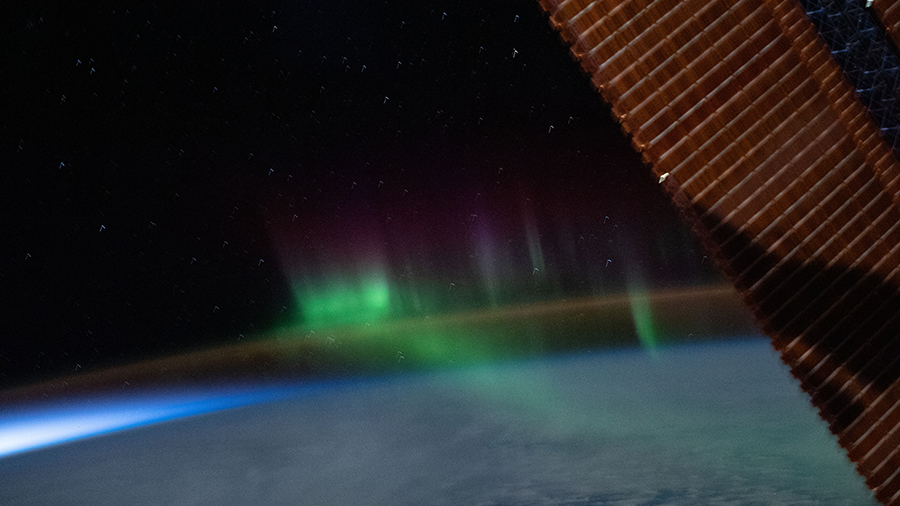
The International Space Station is buzzing today with a broad array of research to improve life for humans on and off the Earth. The five-person Expedition 63 crew has also been preparing for a set of spacewalks as the pace of space science ramps up.
The orbital residents are bringing the orbital lab back up to speed to help scientists harness the benefits of space phenomena. Today, the three NASA astronauts and two Roscosmos cosmonauts juggled a variety of experiments encompassing fluids, combustion, genetics and vision among others.
NASA Flight Engineers Doug Hurley and Bob Behnken spent part of the morning continuing to observe how bubbles behave in microfluid systems. Hurley then started another experiment to look at how tanks of various shapes affect fluids and gases. Both studies have the potential to impact future aerospace and medicine technologies.
The duo also worked on U.S. spacesuits ahead of planned spacewalks to continue upgrading power systems on the outside of the space station. They later split up as Behnken worked on a genetic analyzer that can provide results in just a few hours, much faster than previous research methods. At the end of the day, Hurley joined NASA Commander Chris Cassidy for ultrasound eye scans to examine the cornea, lens and optic nerve.
Cassidy spent a portion his day replacing components in the treadmill located in the Tranquility module. He also began setting up the new Spectrum imager that will use multiple wavelengths to view the cellular and tissue growth of botany samples.
Russian Flight Engineer Anatoly Ivanishin replaced laptop computer batteries then swapped fuel bottles inside the Combustion Integrated Rack to continue safe fuel and flame research. Fellow cosmonaut Ivan Vagner unpacked cargo from the Progress 75 resupply ship and set up a cinematic virtual reality camera to film station activities for audiences on Earth.

Thank you for bringing the excitement of adventure & learning into our lives. The work you all are doing is so beneficial to everyone here on earth, and for the future people who will venture off planet.
Can the space station be modified to travel to and orbit the moon perhaps by installing rocket boosters?
No. The space station was designed solely for low-Earth operations.
This is amazing and uplifting! I am an engineer, architect and general contractor and I know how hard it is to make things that work, last and look good while doing that. Most of what we see in media and social media makes me skeptical of the future of humanity, but the innovation and advancement of science in the areas of space exploration, transportation, renewable energy, more efficient energy usage in machines and devices, medical technologies, … give me hope for mankind.